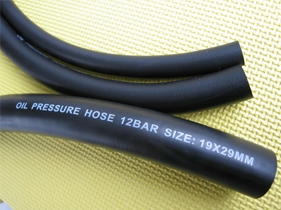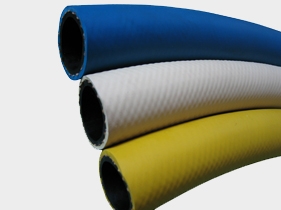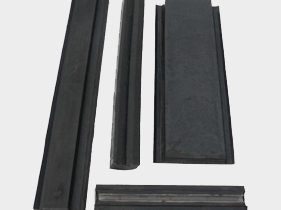
Lanzhou Cord hose Also called pu steel wire pipe, ventilation pipe, dust removal pipe, dust collection pipe, dust conveying pipe, industrial powder dust collection pipe, sweeping car dust collection pipe, drilling machine dust collection pipe, woodworking dust collection pipe, collectively called dust collection pipe. Therefore, industrial food dust transportation and industrial dust transportation are used for dust collection pipe. The production process structure of copper plated steel wire dust collection pipe is to wrap the pipe wall with solid elastic copper plated steel wire spirally, and the pipe wall material is coated with copper plated steel wire with special polyether PUR. PUR material is also called PU material. The thickness of pipe wall can be 0.4mm, 0.6mm, 0.9mm, 1.2mm, 1.5mm, 1.8mm and 2.1mm, depending on the customer's needs. Such as the temperature, wear resistance, flexibility and bending, hydrolysis resistance of the dust collection pipe. It is also necessary to consider whether static electricity is generated in the process of pipe full conveying dust to avoid unnecessary dust explosion and fire. Copper plated steel wire plastic coated dust collection tube is suitable for vacuum pumping of powder and particle in industrial and mining, agriculture, water conservancy, civil engineering, food, petroleum, chemical industry, health and other industries, and transporting water, oil, chemical materials, food, etc. Abrasive solids such as dust, powder, fiber, chip and particle, gas and liquid environment, for dedusting and suction plant, Cord hose company Industrial vacuum cleaners, paper and textile fibers, are used as protective tubes. It is widely used in farmland irrigation, industry and mining, oil depot, sand extraction, sand blasting, food, medicine, indoor gas, powder, dust absorption and emission and other fields. This product is a substitute for PVC, rubber and metal pipes.

For the woodworking industry, many users wear-resisting Cord hose Not unfamiliar, this is an industrial dust collector used on woodworking carving machines, mainly used to absorb wood chips, wood ash, etc. At present, there are many kinds of woodworking vacuum tubes on the market. In the past few years, major furniture factories used PVC steel wire hoses with flat ends. In recent years, more and more enterprises have replaced cheap PVC steel wire hoses with more wear-resistant and durable pu steel wire expansion tubes. Some of the former take a few days or a month, while some of the latter take a few months or a year, They are also steel wire hoses. Why is the service life gap so far? First of all, you may have the impression that many PVC hoses have a very bad smell. This kind of hose is often used in daily life. Because the raw material itself is very cheap, the price of the finished product is also very low. For example, only a dozen yuan a piece. Think about the price of PVC raw materials, which is generally 8-15 yuan a kilogram, And most businesses will not use expensive PVC raw materials, Cord hose company The woodworking vacuum tube produced in this way has a very strong smell, not only unpleasant, but also many times the product can not even achieve environmental protection. However, the current updated product, pu steel wire telescopic tube, is a large woodworking furniture factory. An expensive woodworking carving machine uses a cheap vacuum tube with a very smelly smell, which has much to do with the overall style.

The hard core method adopts the core extrusion process to extrude the inner rubber tube blank, which directly uses the extruder to cover the inner rubber tube blank on the iron core, instead of the traditional casing process, and simplifies the process flow. Lanzhou Cord hose The billet forming adopts the process method of intertwining outer film and steel wire braiding forming. Similar to wrapping water wrapped cloth, the overlapping width is 1/2 of the film width. This process method can replace the method of wrapping outer film by extruder or by hand, reducing energy consumption and cost. We all know that the reinforcing layer and reinforcing layer of the rubber hose are the main force bearing parts, which are used to bear the load pressure. The factors determining the stress condition of the reinforced layer of the rubber hose are determined by the tension of the braided steel wire and the braiding angle. The high-speed steel wire hose braiding machine developed by our factory has introduced the advanced technology of foreign braiding production lines, and integrated the characteristics of domestic braiding machines. It integrates the advanced functions of hydraulic brake hose braiding production line, such as horizontal mechanical transmission, automatic lubrication, and so on, to develop equipment with high productivity and high degree of automation. The range of braiding diameter can be achieved Ф 6— Ф 25 Long core rubber hose (reinforcement layer). It fills the gap of domestic knitting production equipment, which can be widely used in rubber and plastic hose, rubber hose (reinforcement layer) knitting production equipment. The structure of high-pressure rubber hose is composed of four parts: inner liner, inner rubber layer, skeleton layer, middle rubber layer and outer rubber layer. Cord hose company In case of direct contact with the conveying medium, the synthetic rubber with good medium resistance, high tensile strength, high constant tensile stress, small compression permanent deformation and easy processing is usually selected. In order to meet the use requirements of strong polar medium resistance, the inner liner is composed of polytetrafluoroethylene layer and rubber layer, and a layer of film or adhesive is added on the surface of the inner liner to improve the adhesion with the skeleton material.

Lanzhou Cord hose Also called rubber hose for sand blasting. It is suitable for air pressure sand blasting of metal surface for rust removal, hemp removal, and sand blasting rubber hose for wet sand blasting and dry sand blasting in engineering construction. It is suitable for air pressure sand blasting of metal surface for rust removal, hemp removal, and sand blasting rubber hose for wet sand blasting and dry sand blasting in engineering construction. The common application fields are shipbuilding, machining, spraying industry, etc. Appearance of abrasion resistant sand blasting hose: 1. Light abrasion resistant sand blasting hose consists of black, yellowish or transparent abrasion resistant rubber inner layer, central fabric or cord reinforcement layer, medium rubber layer and outer rubber layer; 2. Heavy abrasion resistant hose consists of black, yellowish or transparent abrasion resistant rubber inner layer, cloth clip or cord reinforcement layer, steel wire framework reinforcement layer, medium rubber layer Composition of outer rubber layer 3. The steel wire braided wear-resistant sandblasting hose is composed of black, yellowish or transparent wear-resistant rubber inner layer, single-layer or multi-layer steel wire braided reinforcement layer, medium rubber layer and outer rubber layer. Purpose Abrasion resistant sand blasting hose is a kind of material conveying pipe, which is mainly used for conveying solids containing particles such as particles, gravel, cement, quicksand, mud, gypsum, etc. It is suitable for various tunnel projects, tunnels, caverns and other engineering operations. The general working pressure is less than 12 bar, and the higher bursting pressure can reach 36 bar. Sometimes the vacuum rich negative pressure parameter is 0.8 bar 0.9 bar. Cord hose company Hydraulic requirements 1. The maximum working pressure of wear-resistant sand blasting hose is 0.63MPa. 2. The hose shall be free from water seepage, local bulge, expansion and other abnormalities when conducting hydraulic test under twice the working pressure. Keep the pressure of anti-static hose for 1min, and the length change shall not exceed ± 0.8%, the outer diameter change shall not exceed ± 10%, and the torsion per meter shall not exceed 60 º. 3. The bursting pressure of the hose shall not be less than 4 times of the working pressure.






